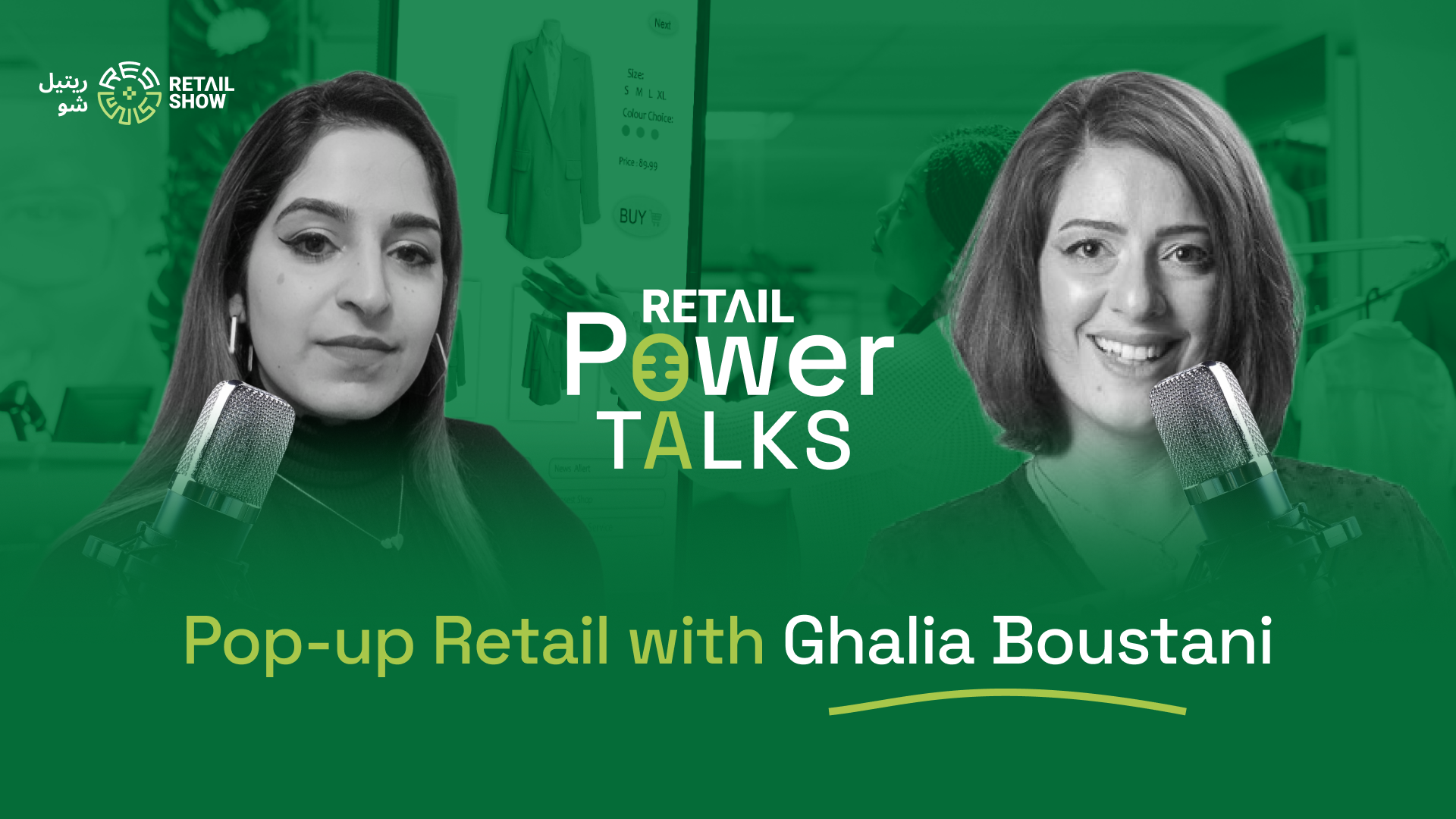In this episode of Retail Power Talks, we were joined by Ghalia Boustani—a retail strategist, researcher, and author of four books. From Paris to the global stage, she has shaped the way brands think about space, storytelling, and customer experience, with particular expertise in pop-up retail, luxury, and experiential formats. In this conversation, we explore how pop-ups have evolved beyond temporary stores, why emotional storytelling still matters, and what the future customer means for brands worldwide.
Q: Let’s start with one of your specialties: pop-up retail. You’ve studied this model extensively. How have pop-ups evolved beyond just temporary stores, and why do they continue to resonate with both brands and consumers today?
A: I started studying pop-up stores in 2008, right at the time when the recession hit Europe. Retailers feared customers would stop purchasing, so they had to rethink models that could bring people back into stores and offer something beyond traditional commerce. At the same time, e-commerce was growing, raising questions about the future of physical retail.
This was when pop-ups truly emerged. At first, brands used them experimentally — to create excitement, drive visits, and build that “store hunt” effect. Customers loved it, and retailers realized the emotional power it held. Since then, pop-ups have evolved into agile tools that serve both distribution and communication purposes.
They also fit naturally into omni-channel strategies. Customers might start their journey online and end it at a pop-up, or vice versa. Each time, they discover a new dimension of the brand. For customers, it’s a source of excitement; for brands, it’s a way to stay relevant and emotionally engaging.
Q: So pop-ups are no longer just about short-term buzz?
A: Exactly. They are ephemeral by nature, but strategically they can create rhythm and momentum. If brands know how to integrate them into the broader strategy, pop-ups become part of a cycle that keeps customers engaged and coming back for more.
Q: You often talk about the emotional dimension of retail spaces. In a world increasingly driven by convenience, why is emotional storytelling still crucial, and how can brands design for that?
A: Emotional factors are essential because customers need a reason to invest in a retail experience. It may be affinity, respect for the brand, or alignment with values — but there must be a personal connection.
Pop-ups allow brands to create atmospheres that go beyond the usual sensorial cues like lighting or music. They offer immersive experiences where customers co-create their journey. This engagement builds emotional bonds that translate into purchases, advocacy, or user-generated content. Atmospherics and storytelling are, therefore, not optional but central to pop-up success.
Q: In your research, you’ve compared ephemeral and permanent retail formats. How should brands decide which to use, and what does each uniquely offer?
A: It shouldn’t be a matter of choosing one over the other. Instead, brands should ask: how do all these formats — online, offline, flagships, concessions, and pop-ups — work together?
The key is integration. Pop-ups should be used when they add value to the customer experience. They’re not a trend to adopt blindly but a strategic tool that complements other channels.
Q: Luxury is undergoing transformation, especially with what you call “circular desirability.” How are high-end brands rethinking desirability in a more conscious, ethical, and circular world?
A: Many luxury brands are now using pop-ups to communicate values around sustainability and responsibility. These spaces aren’t just about design; they immerse customers in the brand’s story and message. In this way, the pop-up reinforces and legitimizes broader communication strategies while inviting customers to be part of the message.
Q: You’ve published and taught extensively on retail strategy. How do you bring your research into consulting with brands? Is there often a gap between academic insight and industry application?
A: Yes, there is. Books present models and case studies, but applying them blindly often fails because contexts differ. Luxury strategies developed in Europe don’t necessarily apply to markets in India, Africa, or South America.
That’s why contextualization is key. In consulting, clients often want quick, bold answers, but I emphasize nuance and the unseen operational aspects of pop-ups. Without careful planning and investment, they simply won’t succeed.
Q: How would you describe the future customer, and what must brands do differently to stay meaningful?
A: Future customers are harder to impress. Many are experiencing fatigue — “just another one of those.” They may engage passively, or simply for distraction.
To stay meaningful, brands must remain authentic and true. With so many distractions, honesty and connection are what keep relationships strong and help rekindle them when they fade.
Q: Finally, you’ve worked across cities, cultures, and formats. For creatives and strategists entering retail now, what mindset shift would you encourage?
A: Openness. Be aware of what’s happening but also recognize your limits. You can’t do everything. Focus on what you can manage and do it well. Don’t get lost in endless possibilities.
Importantly, strategy today requires knowing when to say no. That discipline is crucial for long-term success.
That brings us to the end of the conversation with Ghalia Boustani. From the rise of pop-ups to the emotional dimensions of retail and the mindset shifts needed for the future, her insights remind us that strategy is as much about nuance and authenticity as it is about innovation.

